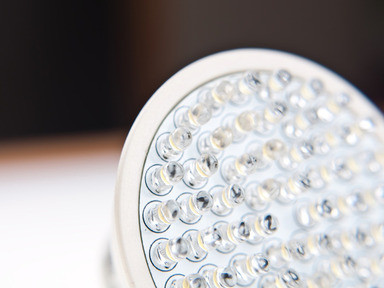
Dual-colour lasers could pave way for more energy efficient LED lighting
Researchers in the US have come up with a new semiconductor device that is capable of emitting two distinct colours and could potentially open up the possibility of using LEDs universally for cheap and efficient lighting.
To create the proof-of-concept device, the researchers, who hail from Arizona State University, used nano-scale materials and processes to emit green and red light separated by a wavelength of 97 nanometres. Their findings have been published in the scientific journal Semiconductor Science and Technology.
According to the researchers, the device is much more energy efficient than traditional LEDs as the colours are emitted as lasers, with sharp and specific spectral lines that are narrower than a fraction of a nanometre. This is in comparison to LEDs which emit colours in a broad bandwidth.
The scientists used a process known as chemical vapour deposition to create a 41 micrometre-long nanosheet made from cadmium sulphide and cadmium selenide powders, using silicon as a substrate.
Prof Cun-Zheng Ning, the lead author of the study, said that semiconductors are traditionally 'grown' together layer by layer, on an atom-scale.
"Since different semiconductor crystals typically have different lattice constants, layer-by-layer growth of different semiconductors will cause defects, stress, and ultimately bad crystals, killing light emission properties."
It is because of this, according to Ning, that current LEDs cannot have different semiconductors within them to generate red, green and blue colours for lighting.
However, recent developments in the field of nanotechnology mean that structures such as nanowires, nanobelts and nanosheets can be grown to tolerate much larger mismatches of lattice structures.
Ning said that while multi-colour light emission from a single nanowire or nanobelt has been achieved in the past, the researchers have realised lasers at two distinct colours.
"To physically 'put' together several lasers of different colours is too costly to be useful and thus our proof-of concept experiment becomes interesting and potentially important technologically."
He said that such technology could potentially be used for solid-state lighting and full-colour displays.





